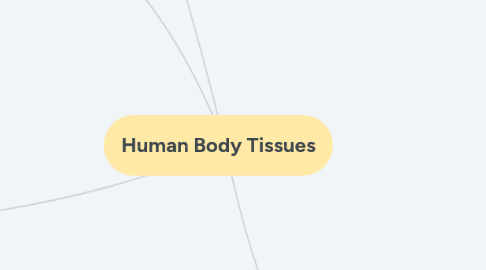
1. Nervous Tissue
1.1. These tissues are the main component of the nervous system. They help in the control and coordination of the body.
1.1.1. Neurons
1.1.1.1. These tissues send nerve impulses throughout the entire nervous system. It is composed of the dendrites, cell body, and axon, which all come together to send electrical signals that control the body.
1.1.2. Neuroglia
1.1.2.1. The Neuroglia are cell groups that maintain the neuron health. They provide nutrients and support the neurons.
2. Epithelial Tissue
2.1. A type of body tissue that lines our body cavities and organs. It protects, absorbs, excretes, and secretes fluids. It is a highly mitotic, avascular type of tissue with both basal and apical surface, and has minimal neural connections.
2.1.1. Functions
2.1.1.1. Endothelium
2.1.1.1.1. A simple squamous endothelium that lines the interior of the circulatory vessels and the heart.
2.1.1.2. Mesothelium
2.1.1.2.1. A simple squamous endothelium that lines the serous membranes (pericardium, pleura, peritoneum) and closed body cavities.
2.1.1.3. Glandular Epithelium
2.1.1.3.1. An epithelial tissue that forms glands. It is present in the endocrine gland, which secrete hormones into the blood stream, and the exocrine gland that secretes juices into tubes or ducts that lead to the outside of the body.
2.1.1.4. Mucous Membrane
2.1.1.4.1. A ciliated epithelial tissue that secretes mucous through Goblet cells that produce it. It lines the body cavities and several tubular organs.
2.1.2. Classifications
2.1.2.1. Shape
2.1.2.1.1. Cuboidal
2.1.2.1.2. Squamous
2.1.2.1.3. Columnar
2.1.2.2. Arrangement
2.1.2.2.1. Simple
2.1.2.2.2. Stratified
2.1.2.2.3. Pseudostratified
2.1.2.2.4. Transitional
3. Muscle Tissue
3.1. The main function of this tissue is locomotion. These tissues have the ability to contract and relax, both voluntarily and involuntarily.
3.1.1. Skeletal Muscles
3.1.1.1. The skeletal muscles are long, cylindrical, striated, and made up of multinucleated cells. This type of muscle tissue is generally for voluntary movement. It is connected to the bones by the tendons.
3.1.2. Cardiac Muscles
3.1.2.1. Unlike the skeletal muscles, the cardiac muscles are made for involuntary movement of the heart. It appears branching, striated, and has only one nucleus per cell. Through the help of the cardiac muscles, the heart is able to pump and propel blood. This type of muscle can be found in the walls of the heart.
3.1.3. Smooth Muscles
3.1.3.1. The smooth muscles are also responsible for involuntary movement, although they do not have striations, unlike the two other muscle tissues. It appears smooth due to the closely arranged cells which contain one nuclei. This muscle can be found in the hollow internal organs such as the digestive tract, bladder, and arteries, propelling substances.
4. Connective Tissue
4.1. A highly vascular type of tissue with an extracellular matrix that consists of fibers and ground substance. It protects & supports the body, binds structures, transports materials, and is responsible for immunity.
4.1.1. Loose Connective Tissue
4.1.1.1. A tissue made up of loosely dispersed fibers. It holds organs in place and attaches epithelial tissue to other underlying tissues.
4.1.1.1.1. Areolar Connective Tissue
4.1.1.1.2. Adipose Connective Tissue
4.1.1.1.3. Reticular Connective Tissue
4.1.2. Dense Connective Tissue
4.1.2.1. A connective tissue which is made up of densely-packed bundles of fibers. The different types of DCT have various strength and functions.
4.1.2.1.1. Dense Regular Connective Tissue
4.1.2.1.2. Dense Irregular Connective Tissue
4.1.2.1.3. Dense Elastic Connective Tissue
4.1.3. Specialized Connective Tissue
4.1.3.1. Bone
4.1.3.1.1. A connective tissue with an extracellular matrix composed of calcified ground substance and collagen fibers. Present in the matrix are lacunae, containing osteocytes (matured osteoblasts). It is a strong and stiff tissue that provides locomotive support and protects delicate organs.
4.1.3.2. Cartilage
4.1.3.2.1. It is a connective tissue with a gelatinous ground substance. It is thin, durable, and avascular.
4.1.3.3. Blood
4.1.3.3.1. They are the only connective tissues that do not produce their own extracellular matrix. Instead, plasma acts as their matrix, allowing them to move and transport materials throughout the body.
4.1.3.3.2. The blood consists of the red blood cells, white blood cells, platelets, and plasma.
